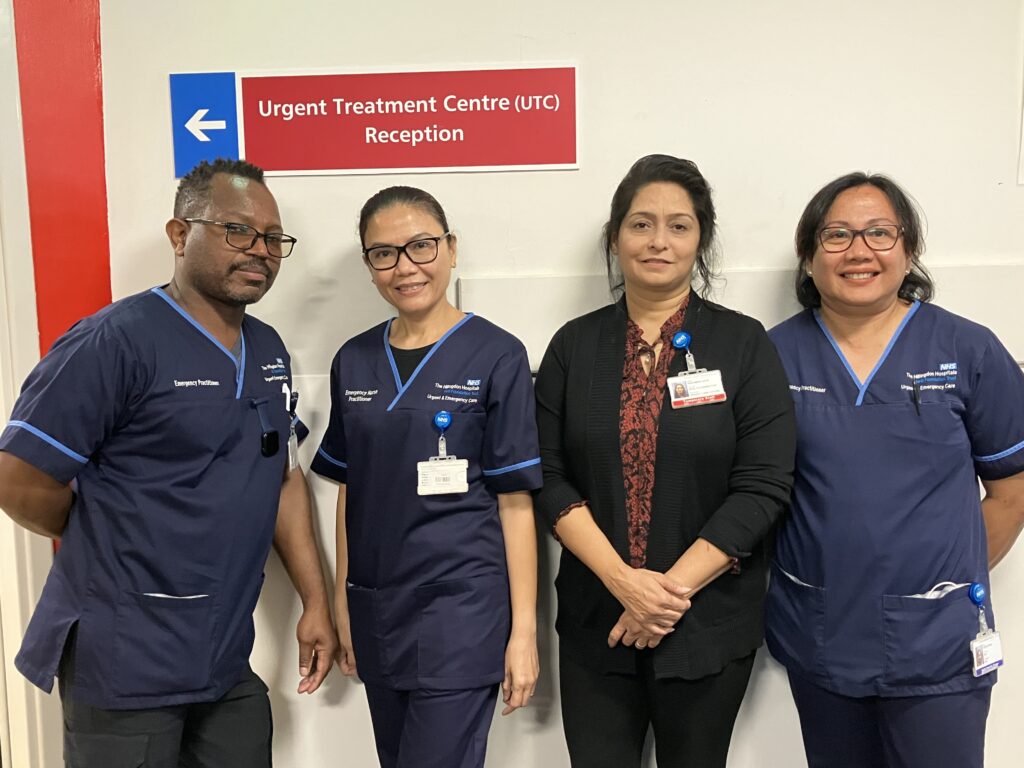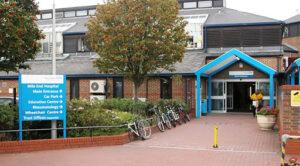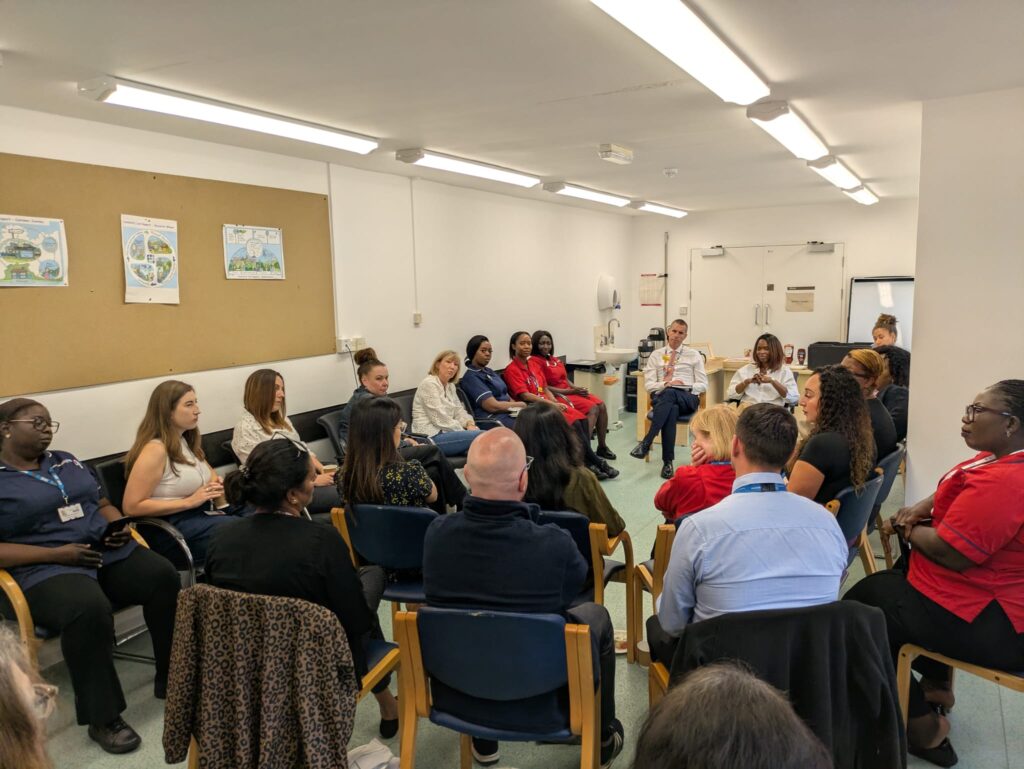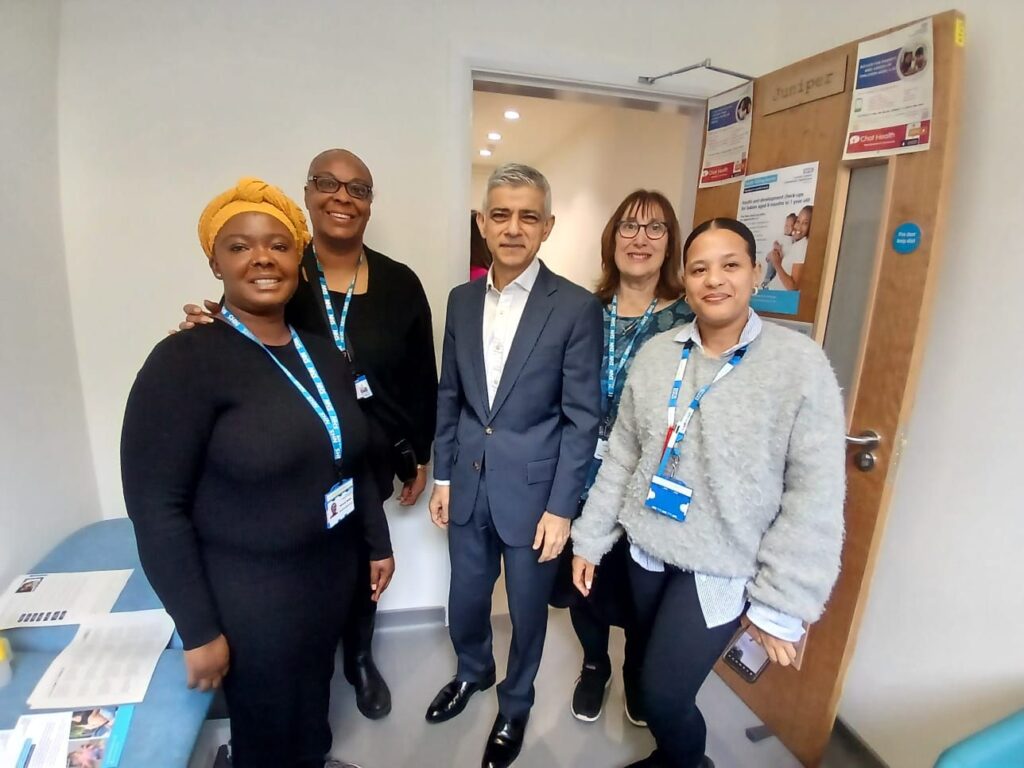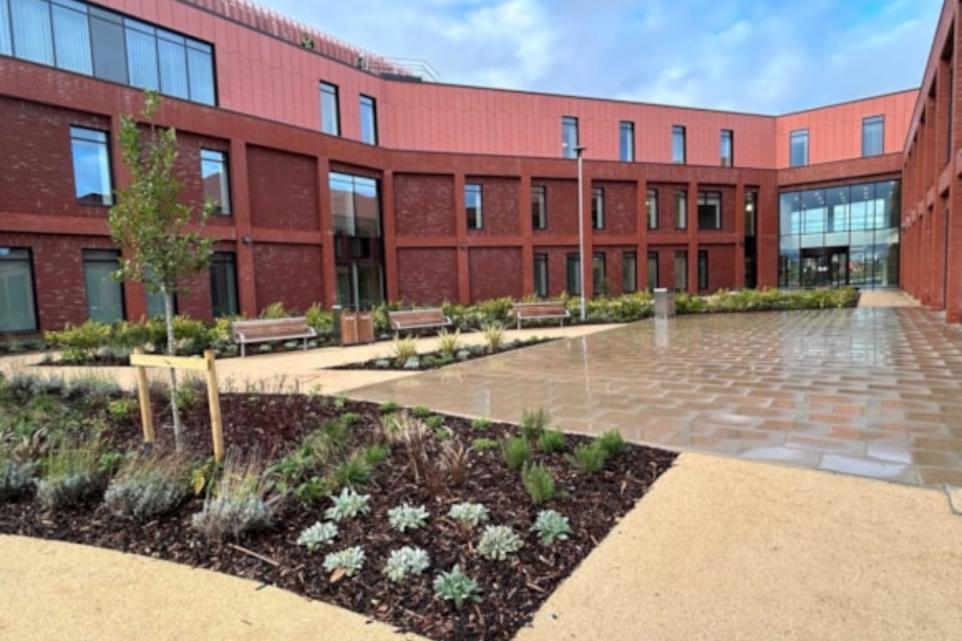Hospital to community
The 10 Year Health Plan for England sets out a bold and ambitious new direction for the NHS, aiming to make care more accessible, personalised and responsive to everyday life. By shifting care to communities, overstrained hospitals can focus on delivering only the best, personalised care for those who need it most. Meanwhile, care for patients in the community can conveniently fit around their everyday lives.
Explore how this transformation is already taking shape across our region.
Transforming urgent care through Pharmacy First
North West London Integrated Care Board (NW London ICB) has taken a significant step toward reshaping urgent care delivery by piloting a new referral pathway to redirect appropriate patients from hospital Urgent Treatment Centres (UTCs) to community pharmacies to the NHS Pharmacy First service. This initiative, aligned with the NHS Long Term Plan, supports the national ambition to reduce pressure on Urgent and Emergency Care (UEC) services by expanding access to out-of-hospital care.
The challenge
Patients were self presenting to the Urgent Treatment Centre who did not necessarily require the level of service provided and could be better managed in a community environment. A redirection pathway was developed through collaboration of hospital staff, ICB staff and local community pharmacies. The Pharmacy First service allows UEC settings to refer patients with minor illnesses and seven specific clinical conditions to a community pharmacy of the patient’s choice. This helps patients access timely care, supports self-management, and positions pharmacies as the first point of contact for minor illnesses and medicines advice.
The pilot
Between December 2024 and March 2025, Hillingdon UTC trialled the Pharmacy First referral model. During this period:
- 132 patients were successfully redirected to community pharmacies
- Pressure on UTC services was reduced
- Patients gained faster access to care and medicines advice
The pilot demonstrated that community pharmacies can serve as an effective first point of contact for minor health concerns, empowering patients to self-manage and easing the burden on hospital services.
Collaboration and innovation
A pan-London Integrated Care Board working group was formed to support the pilot, enabling cross-system collaboration and the sharing of best practices. This marked the first initiative of its kind in London, setting a precedent for future innovation in urgent care pathways.
Recognition and expansion
The pilot’s success was recognised nationally:
- Award at the Clinical Pharmacy Congress London 2025
- Highly commended PrescQIPP award 2025
- Promoted through regional webinars to encourage wider adoption
Following the pilot, the referral pathway has been formally embedded into The Hillingdon Hospital’s redirection process. Plans are now underway to roll out the model across the other North West London Trusts.
Impact and future outlook
The Hillingdon Hospital pilot exceeded expectations, showcasing the power of integrated care and community-based solutions. Key outcomes include:
- Right care, right place
- Released UTC capacity
- Reduced waiting times
- Improved patient access to timely care
- Reduced patient management costs for the ICB by over sevenfold, demonstrating strong financial viability
This case study highlights how strategic collaboration and innovative thinking can transform urgent care delivery, placing patients at the heart of the system while strengthening community health infrastructure.
For further information, please contact the NW London ICB team at: nhsnwl.mpt@nhs.net
The co-location of services into a Neighbourhood Health Centre will be transformative for people who have faced systematic challenges around the coordination of their care. For example, we know that women have faced particular difficulty with NHS fragmentation in the past and we are committed to women’s health never again being ignored.
In Tower Hamlets, the women’s health hub has proven effective by providing women referred by their GP with a single point of access, triage and direction to the right care, in the right place.
The benefits have included:
- a reduction in the number of gynaecology referrals that needed to be seen in secondary care. In its first 12 months, only 25% of referrals needed hospital care, representing a 60% reduction
- a decrease in the average wait for a gynaecology appointment from 27 weeks to 11 weeks with waiting lists falling by 30% in a matter of months
- 95% of patients receiving an initial response from their referral within 48 hours and 100% doing so within 5 days
NHCs will need to consider how they build on this evidence and provide coherent, coordinated experiences of care for those who have otherwise not had one.
Visit the North East London Women’s Health playlist – a series of videos offering trusted, expert advice on a range of women’s health conditions.
Read the full case study on the NHS England website or find out more on the Barts Health NHS Trust website.
Inspired by Brazil’s successful family health strategy, community health workers visit residents in their homes on a monthly basis. They build personal relationships, rather than delivering transactional care – allowing the service to identify health and social needs early and personalise
support.
Their impact has been significant. For example, a one-year evaluation of Westminster’s CHWW programme – one of the country’s most established – showed a 47% increase in immunisation uptake and an 82% increase in cancer screening and NHS Health Check uptake in visited households (compared to unvisited households), while hospital admissions fell by 10% and emergency department visits by 7% among people living in postcodes covered by the service.
Find out more about Community Health and Wellbeing Workers (CHWWs) on the National Association of Primary Care website or read the articles below from the Healthcare Central London website:
- Innovative Community Health and Wellbeing Worker (CHWW) initiative gains national attention
- A launch year well done: Westminster’s Community Health & Wellbeing Worker (CHWW) Programme – Healthcare Central London A launch year well done: Westminster’s Community Health & Wellbeing Worker (CHWW) Programme
The London Ambulance Service (LAS) Hear and Treat initiative is already delivering the shift from hospital to community care, providing clinical assessment over the phone so crews can get to the most urgent cases, faster.
The service has helped ambulance crews reach other patients faster and has helped the Service meet its target in March for responding to Cat 1 incidents – the most seriously ill patients. It has also helped reduce response time for Cat 2 incidents by over four minutes on average compared to March the previous year.
By maximising the use of ‘hear and treat’, LAS is able to release a significant number of hours back to ambulance crews so they can respond to the sickest patients. On average this equates to around 9,200 hours for our double-crewed ambulances – 18,400 people hours per week
Dr. Fenella Wrigley MBE, Chief Medical Officer at London Ambulance Service, said: “Thanks to the innovative work of our colleagues at the Hear and Treat service, we are driving down the time it takes to get to our most seriously ill patients and reduce A&E admissions when other forms of care would be more suitable.”
Read more on the London Ambulance Service NHS Trust website.
The Multi-Morbidity Model of Care (MMMoC) in South East London is a new way of supporting people who have several long-term health conditions. It focuses on treating the whole person, not just their illnesses, by bringing together all parts of the healthcare system to work more closely.
This model of care supports patients at risk of developing or progressing chronic kidney disease and prioritises addressing their barriers to care. For example, if a patient has caring responsibilities or social needs that prevent them from prioritising their physical health needs, the team will support the patient priorities and then look towards optimising their care for their chronic kidney disease and other long term conditions.
The innovation is in the collaborative approach between primary and secondary care staff, and between clinical and non-clinical staff (e.g. social prescribers, care coordinators). This makes this a truly holistic pathway, where colleagues have built relationships and come together to treat our patients as a whole person, led by patients to provide them with the best quality care.
Francine’s story follows a patient through her care journey, including what a point-of-care clinic looks like.
In January 2025, London Ambulance Service (LAS) formed a collaborative approach in North Central London (NCL) to form a Single Point of Access (SPOA) / Integrated Coordination Hub.
The SPOA has supported ambulance decision making both at the point of the 999 call and when an ambulance is on scene with the patient. This has been achieved by bringing together ambulance clinicians and nurses with locally based Senior Doctors such as GPs and A&E consultants who are available to ambulance crews to discuss the best pathway for individual patients which the patient is happy with.
This new process, which sees health and social care partners working collaboratively, has enabled more patients to be referred to pathways closer to home either after a telephone assessment or face to face assessment and avoided going to the Emergency Department of a busy hospital when it is not needed. The telephone assessment rate, known as Hear and Treat, in NCL has remained as one of the best in the country, consistently treating 20% of 999 patients over the phone in March 2025 – this is compared to a national average of 16%
In addition, they have reduced the number of patients taken to hospitals and this has helped to contribute to fewer delays for ambulance handover helping to reduce the time it takes to get an ambulance to sick and injured patients in this area.
The SPOA is now looking to expand this service with a view to support some of the most vulnerable patients, frailty and mental health, needing urgent or emergency care.
Croydon Integrated Neighbourhood Teams (INTs) are transforming how health and care services are delivered to local communities. The model brings together professionals from health, social care, and the voluntary and community sector to work as one team within neighbourhoods.
The aim of the INT model is to enhance health and care services through collaboration, reduce division between services, and ensure that residents receive more personalised, coordinated care. The approach emphasises treating individuals holistically, taking into account not just their physical health but also their mental and social wellbeing. It supports professionals to work together in a more proactive way, identifying residents who may be at risk and providing early, tailored interventions to help them live healthier, more independent lives.
Through the use of the Health Insights proactive platform, around 30,000 residents have been identified as potentially benefitting from proactive care planning. The teams assess each resident’s overall health and care needs and develop a coordinated plan of support, which may include medical treatment, social care, or community-based support. This approach ensures the resident receives the right care at the right time from the right people.
Place-Based Leader for Croydon, Matthew Kershaw shared:
“Integrated Neighbourhood Teams are transforming how we work in Croydon – bringing together health and care professionals to provide more coordinated, person-centred support close to home.”
Since launching in 2017, Croydon INTs have supported over 3,446 residents with proactive care planning. As a result, many of these individuals have been able to remain in their own homes rather than being admitted to hospital.
This approach demonstrates the power of partnership in delivering high-quality, community-based care. By focusing on collaboration, proactive planning, and holistic support, the model is reshaping local services and putting residents at the centre of their care. It stands as a leading example of how health, social care, and community organisations can work together to improve outcomes and support healthier, more resilient communities.
Coverage: NHS England — London » Neighbourhood health services bringing care to Londoners’ doors
Families in Tooting now have a dedicated space for support, advice, and connection with the official launch of Wandsworth’s third Family Hub. The new hub on Beechcroft Road brings vital services together under one roof.
Designed to streamline access to support, the hub offers a wide range of services for parents, children, and young people including parenting advice, early-years support, youth services, health checks, digital skills, and job training.
By centralising these resources in a single, welcoming location, the Family Hub aims to strengthen families, reduce barriers to support, and create new opportunities for residents across the community.
Mayor Sadiq Khan praised the Tooting Family Hub as a “crucial one-stop shop,” offering an array of services from housing support to healthcare advice. He emphasised how the hub will help ensure every family in London receives the support they need to thrive.
Read more on the Central London Community Healthcare NHS Trust.
Opened in November 2024, St. George’s Health and Wellbeing Hub is a purpose-built facility that brings together health, social care, and voluntary services all under one roof, shifting more care into the community and reducing reliance on hospital services.
Residents can access a wide range of services including diagnostics, primary care, community health, mental health support, housing and welfare links, rehabilitation, prevention programmes, and creative therapies. The space also includes an Early Cancer and Community Diagnostic Hub, an integrated café, education facilities, and communal gardens offering eco-therapy.
Irvine Muronzi, Integrated Care Director of Havering, said: “The key feature of the hub is its emphasis on community wellbeing – there is a café for socialising, multi-purpose educational and meeting spaces, multi-faith room and a sensory dementia-friendly communal garden for relaxation and inclusivity. It is truly a community hospital in your back garden, supported by a wonderful team local volunteer, everyone is welcome to visit.”
In addition to hosting a GP practice, the hub offers outpatient services, mental health support, and direct access to a diverse team of healthcare professionals, as well as faster access to essential diagnostics, including blood tests, MRI, CT, X-ray and ultrasound scans.
The hub also houses a Community Diagnostic Centre that includes non-obstetric ultrasound, MRI, CT, X-ray and echocardiogram services.
Luke Burton, Joint Director of Partnerships, Impact and Delivery for Havering at NHS North East London, said: “We now have a fantastic integrated facility, which is helping us ease pressure on local hospitals, provide quicker access to diagnostic tests and treatment, and support our patients in a joined-up way. It will be a huge asset to people in Havering and the surrounding area for many years to come.”
For older residents, the Ageing Well Centre offers comprehensive health assessments that address both physical and emotional wellbeing. With a focus on preventative care, it helps reduce hospital admissions and offers urgent assessments for those who need enhanced support.
Fiona Wheeler, Chief Operating Officer at BHRUT, said: “We’re transforming how we support people in the community, with outpatient clinics and same-day tests at the hub as well as the Ageing Well Centre which provides a better experience for frail and elderly patients than going into hospital.”
St George’s Health and Wellbeing Hub has recently been shortlisted for a Health Service Journal Award in the category Integrated Care Initiative of the Year.
To find out more visit the North East London NHS Foundation trust website.

